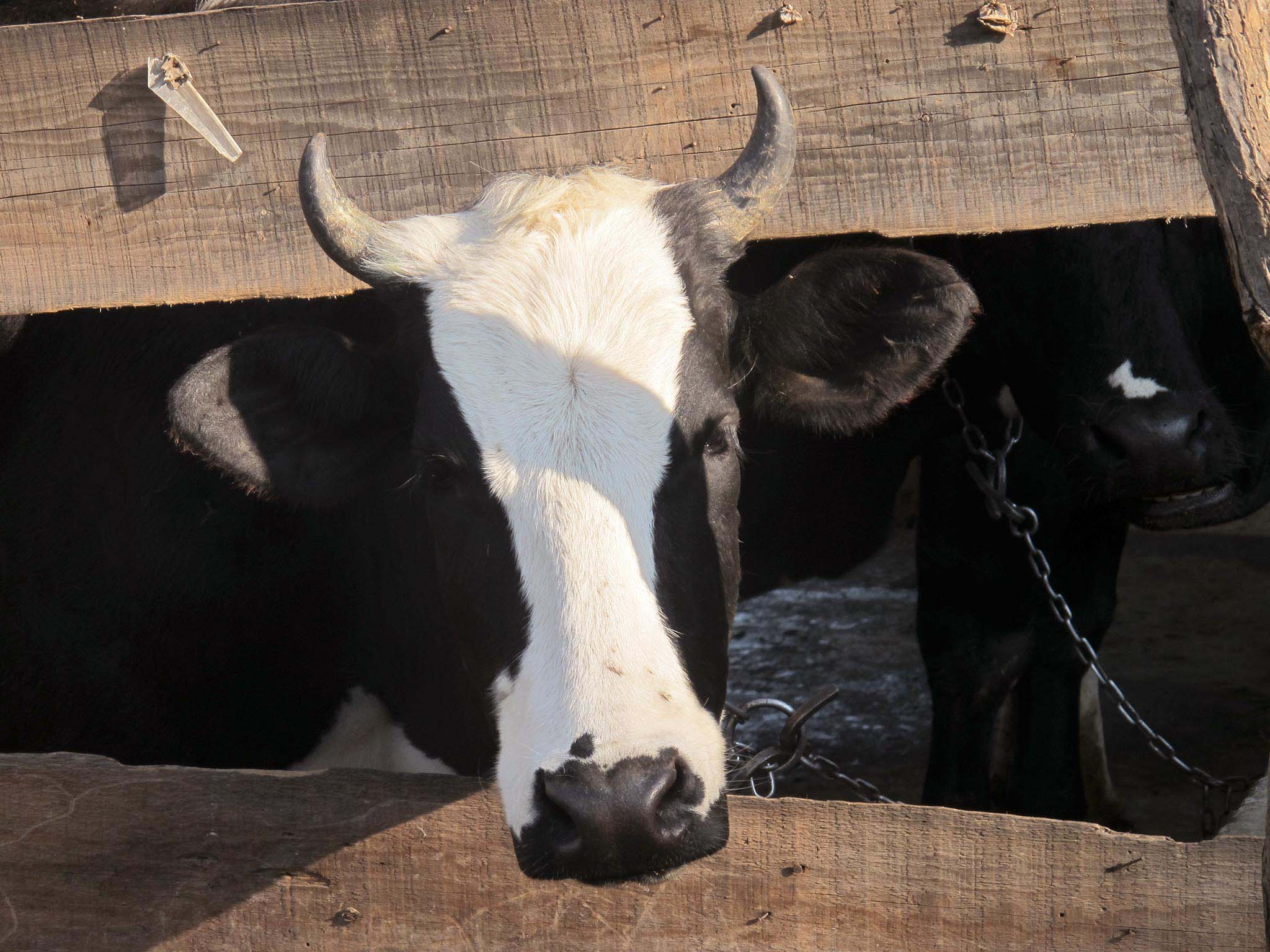I had passed Iztapalapa and Valle de Chalco. Since I had been told these areas were particularly dangerous my paranoia began to subside. I no longer felt cannibals at any moment could attack me and that every male between twelve and forty was probably a mugger. Yet another victory for reason in mediatized times when image is more important than substance. I left Chalco and continued along the freeway until the edge of Chalco morphed into that of Cocotitlán, a village on a hill on the far southeast corner of the city.
I ambled into a hotel aptly called La Frontera on the highway. Next to it was a large restaurant with roasted goat and a singer for entertainment. It was a comfortable local and I congratulated myself on having reached safety. I contemplated a menu of hearty country food. After treating myself to some grilled rabbit I retired to my hotel in the still night of the countryside.
The next morning I headed over some fields into Cocotitlán. Campesinos were wrestling stalks of corn into tall teepee shapes. Two teams were playing football in a grass field under the hill. I was surprised to find one of them wearing the red and white colors of Ajax Amsterdam.
The hill itself was half-excavated for purposes of gravel mining. The other half was covered with a traditional village. Apparently the villagers were beginning to be somewhat worried about the extent of the quarry and the impact it might have on the solidity of the hill in general. The hill looked vaguely cartoonlike because of this cut-away, like some impossible castle from a Japanese anime.
So I guess it is appropriate that the village had a reputation for sorcery and witchcraft, just as San Francisco Tecoxpa in Milpa Alta did. I once read that in parts of Mexico the accusation of sorcery is often an expression of envy, a reaction to a person’s unexplained success, success which in a way could be seen as a treason to the local culture and assimilation in the culture of the conqueror. I was also told that in rural areas some villages were slower to give up their pre-Hispanic traditions than others. Any pre-Hispanic religious practices going on inevitably came under the heading witchcraft and places where these rituals took place were hence particularly sorcerous, haunted and given to visits by the diabolic black rider, the Charro Negro.
I walked upward through the streets of the village among the painted facades and rural market up to the church standing on the crown of the hill. Rocks surrounded the church, some of them with pre-Hispanic patterns, spirals and circles carved into them.
As I wandered among the rocks I met a short man in his thirties with worn clothes and a tired look, sitting and enjoying the view. He told me he had been a truck driver but he had lost his job and was going through a rough patch. We looked down over the flatlands and hills below us and up to the great volcanoes.

I told him I had been walking around the edge of the city. He told me he was also a pata de perro – a dog’s foot – and liked to wander around the surrounding region. He said he had scaled the Popocatépetl while it was volcanically active and that inside the crater was a little lake of green water with vapor streaming upwards. He would go hiking for days among the ravines and slopes of the Iztaccíhuatl where he had found caves with graven images in them. He pointed to a spot in the distance and said that there was the ruin of a hacienda there. As he was wandering alone he had stumbled on people strangely dressed in white tunics and pointed white masks performing a ritual, he maintained himself out of sight and slipped away without being seen. He had not been able to identify the religion but it had unsettled him.
We looked toward the great volcanoes. Mexico is an idolatrous culture, where physical things such as statues of saints and volcanoes are imbued with spiritual qualities. Like a gravitational field diminishing with distance, the soul of a place or idol only has a limited geographical reach. On the crown of the hill of Cocotitlán one could hear the whisper of the great volcanoes and time folding back on itself like an echo. In the villages under the volcanoes they are still worshipped as deities and looking southwest from Cocotitlán it was not hard to imagine why.
The unemployed truck-driver also told me that on the day of independence the people took out their guns at midnight and shot them into the sky. He told me some guns were very old dating back to the revolution, though many were quite new and people used the occasion to show they were armed and not to be messed with. I imagined the gunfire echoing through the night from the carved up hill.
The lure of the volcanoes eastwards was strong. But I was in the orbit of another spirit. My route lay along the edge of the megalopolis to the north among the hills of Iztapaluca and the wide marshy Lake of Texcoco in the distance beyond them.
I walked downward through the village to my hotel in the flatlands below.
